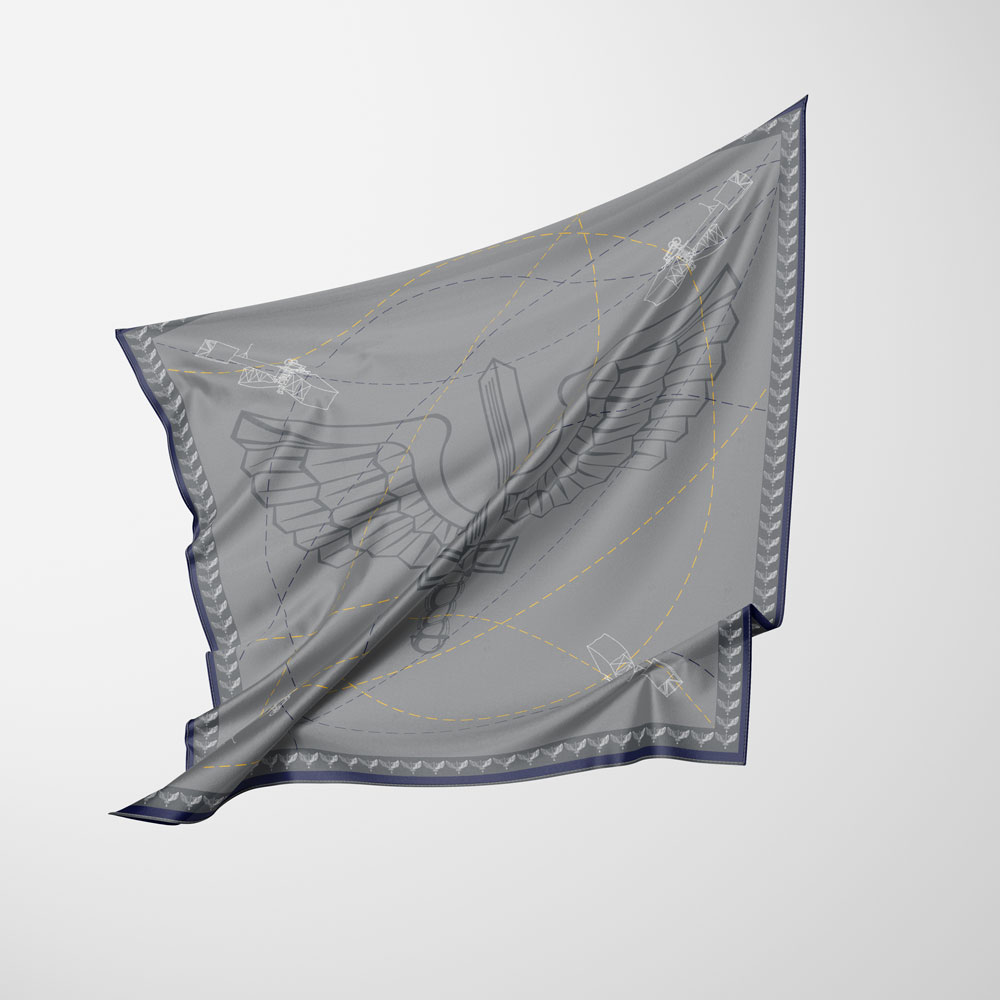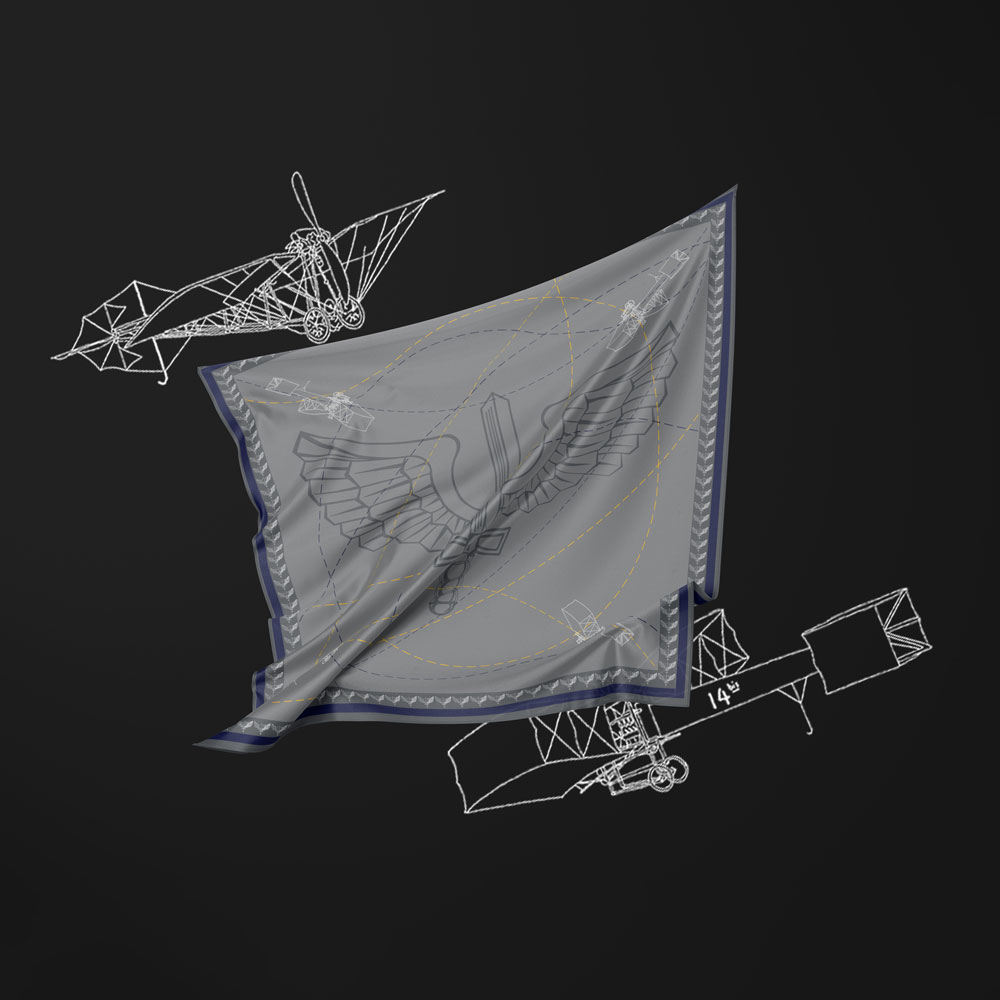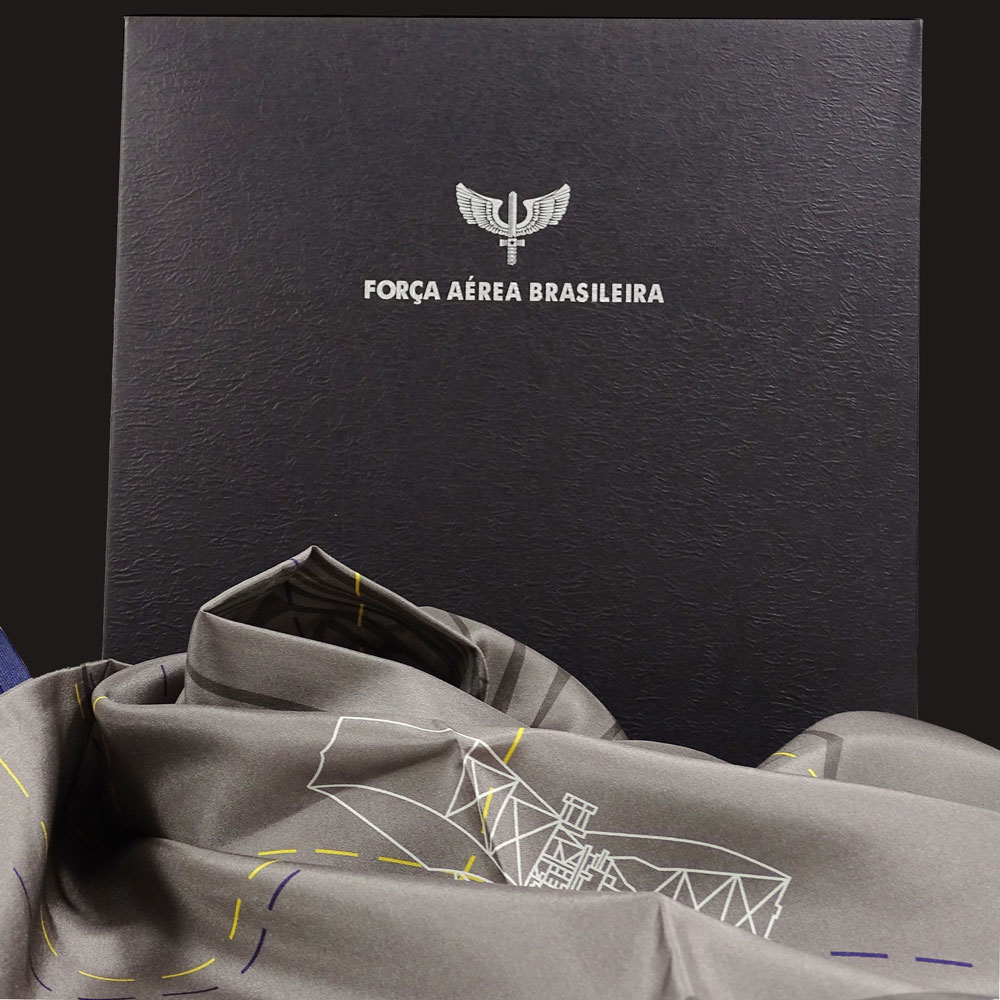Military scarf goes to South America
A look behind the scenes: The production of the exclusive military scarf made for special guests by Tie Solution
Today we take you on a journey through the fascinating world of silk production and present to you a unique scarf that was created by the hands of our experts: the Military Silk Scarf made of Habotai silk, printed using the screen printing process and hand-rolled, enhanced with an individually woven brand label. This exquisite accessory is presented in an elegant black envelope with stamping and is intended for a special field of application: the military of the skies in a South American country.
Production
At Tie Solution, each piece is crafted with the utmost care and precision. This military scarf is made from Habotai silk, a high-quality silk weave known for its fine texture and elegant appearance. The screen printing, a traditional printing technique, gives the scarf its unique pattern, while the hand-rolled edge ensures a perfect, clean finish. Every detail is lovingly crafted by experienced artisans to ensure the highest quality.
What is Habotai silk?
Habotai silk, also known as China silk, is one of the most popular types of silk worldwide. It is characterized by its delicate texture and light transparency, making it perfect for elegant accessories such as scarves and shawls. Habotai silk is obtained from the cocoons of the silkworm and is known for its softness and smoothness.

Other types of silk
In addition to Habotai silk, there are a variety of other types of silk, each with its own unique characteristics:
- Mulberry silk: This high-quality silk is obtained from the cocoons of the silkworms and is known for its exceptional softness and shine.
- Chiffon silk: Chiffon silk is known for its light and transparent texture, making it ideal for airy clothing pieces and scarves.
- Dupion silk: Dupion silk is slightly coarser and has an irregular texture, giving it a rustic charm. It is often used for formal clothing and decorative purposes.
- Wild silk: This silk is obtained from the cocoons of wild silkworms and is characterized by its irregular texture and natural color variation.
- Satin silk, twill silk, and many more
Each of these types of silk has its own unique characteristics and applications, but they all share the incomparable elegance and beauty that makes silk a timeless material.
Summary
The military scarf by Tie Solution combines the highest craftsmanship with noble materials to create an accessory of timeless elegance. Made from the finest Habotai silk and embellished with an individually woven brand label, this military scarf is not only a fashion statement but also a symbol of quality and style. Whether for daily use or special occasions, this military scarf is an essential accessory for anyone who values exclusivity and elegance.


